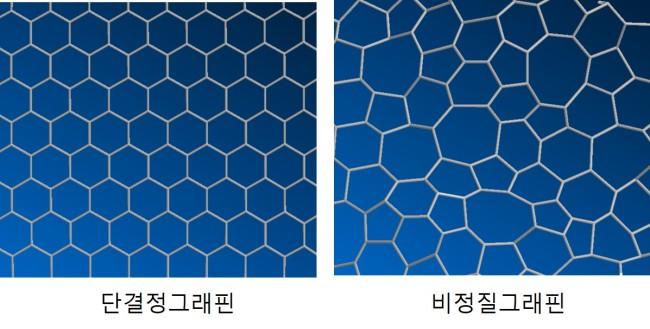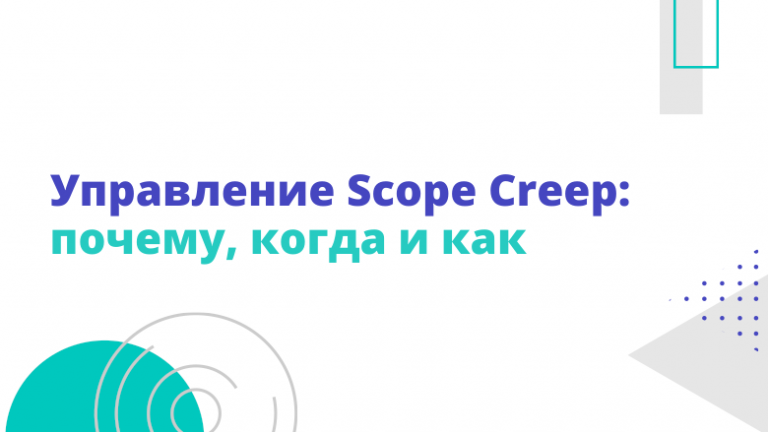What is the fate of 2D materials in Russia?

After the discovery of graphene (a two-dimensional form of carbon), more than ten substances with a similar structure were discovered (hexagonal boron nitride, GaN and AlN, transition metal dichalcogenides, etc.). Their physical and chemical properties have a huge practical potential and are already partly used in composite materials, protective coatings, biomedical sensors, pharmaceuticals, and about 40 other industries.
Our review summarizes the results of intellectual activity (RIA) in the Russian Federation in the field of two-dimensional materials over the past 5 years, using open databases.
The study of 2D substances has led to the discovery of many important and unexpected phenomena, and the general interest in such systems is confirmed by the award of two Nobel Prizes over the past decade: in 2010 to Geim and Novoselov for the study of graphene and in 2016 to Kosterlitz and Thouless for the theory of topological phase transitions (Berezinsky-Kosterlitz-Thouless theory), an important component of which is the theory of melting of two-dimensional crystalline systems.
In particular, graphene is a two-dimensional metal in which the electronic spectrum has a linear dispersion and is described by a massless Dirac Hamiltonian. High-speed electron transport and their high mobility (2.5 105 cm2 V-1 s-1) make graphene an attractive material for nanoelectronics, especially for high-frequency applications. Its optical (optical absorption by one layer ≈2.3%), thermal (thermal conductivity coefficient 3000-5000 W∙m-1∙K-1) and mechanical properties (Young’s modulus 1012 Pa, intrinsic tensile strength ~1.3 1011 Pa) are attractive for micro- and nanomechanical systems, thin-film transistors, transparent and conductive composites and electrodes, flexible and printable optoelectronics and photonics. A large specific surface area (up to 2400 m2/g), chemical purity (up to 99.999%), and the ability to change properties by adding various functional molecules make graphene and its popular derivatives, graphene oxide and graphene fluoride, promising materials for biotechnology and medicine.
Research and development in 2018-2022 were also carried out under grants from the Federal Funds; within the framework of regional programs, in particular, the Innovation Fund of the Samara Region; through R&D of individual universities. The Ministry of Industry and Trade of the Russian Federation periodically ordered research, for example, on the topic “Monitoring the development and implementation of technologies for the production of graphene, its derivatives, other 2D crystals and the production of products based on 2D crystals in the Russian Federation and the world” from Moscow State University named after M.V. Lomonosov. Large enterprises with state participation implemented their own R&D programs, for example, Concern Sozvezdie JSC (Voronezh), NPP Pulsar JSC (Moscow).
In Russia, researchers and developers of graphene materials and products based on them are concentrated in about 100 organizations.
About graphene and its “brothers”
It is important that graphene has a one-atom thickness (Figure 1).
The number of carbon atoms in a single particle of graphene, the area of the plate, its shape, the presence of defects and alloying elements, as well as the chemical state of peripheral carbon atoms are not regulated in any way.
Figure 1: Schematic representation of graphene

In practice, graphenes include not only monolayers and monolayer tapes, but also double layers (bilayer), triple layers (trilayer) and graphene nanoparticles (packages of 5-10 layers), which are often called multilayer graphene, MSG (multilayer graphene) or graphene nanoplates, GNP (graphene nano plateles).
The term “amorphous graphene” has recently been introduced. It differs from single-crystal graphene with strictly isosceles hexagonal cells of carbon atoms in that its cells have 5, 6, 7 and even 8 carbon atoms, and the shape of the polyhedra is curved (Figure 2).
Figure 2: Single crystal graphene (left)
and amorphous graphene (right)

Amorphous graphene has a low electrical conductivity, which expands the possible areas of its use beyond electronics.
In graphene, “relativistic” Landau levels and “half-integer” quantization of the Hall conductivity are realized. The effect of tunneling in graphene (transparency of high barriers) is known.
The specific conductivity of graphene never falls below the conduction quantum, regardless of defects and the number of layers.
The study of graphene by electron diffraction showed that the normals to the surface deviate from the vertical by an average of 10º due to its wavy surface.
The properties of graphene varieties as the structure is distorted to some extent approach the properties of graphite. The boundary between highly split graphites and multilayer graphenes has not been precisely defined. However, it is believed that it is located near the number 10 (package of 10 graphene layers).
Typical defects in single-layer graphene are shown in Figure 3.
Figure 3: Defects in single-layer graphene of the “vacancy” type,
“Stone-Wales topological defect” and “nanopore”

Bilayer graphene (bilayer) is a unique representative of 2D systems in condensed matter physics, which has outstanding mechanical and transport properties. Known bilayers of graphene with a moiré structure, bilayers with adsorbed hydrogen, fluorine and oxygen atoms, bilayers with a grid structure.
Twisted graphene is a two-layer consisting of two graphene sheets laid one on top of the other so that the crystalline axes of the layers do not coincide, but form a certain finite twist angle . The behavior of electrons in such a system is very sensitive to the twist angle. At a certain , when an electric field is applied along the normal to such a two-layer, a finite density of states is formed at the Fermi level.
In the last 3 years, a significant breakthrough has been made in understanding the properties of disordered graphene. For example, in 2018, a big discovery was made in fundamental science — superconductivity in twisted graphene.
The direction of synthesis and application of graphene derivatives, a family of carbon nanomaterials, which are a single graphene layer, the edges and surface of which are coated with a given type and number of functional groups (carboxyls, amines, etc.), has received active development. The introduction of functional groups, doping, and changing the morphology of the graphene layer lead to the reconfiguration of the π-conjugated electron cloud due to the partial transformation of sp2-hybridized carbon atoms into sp3-hybridized ones, as well as the inductive effect from the presence of donor or acceptor functional groups. This makes graphene derivatives one of the most promising 2D materials for various practical applications, ranging from optoelectronic devices and electrochemical energy storage systems to gas analytical systems and biosensors.
Natural sources of graphene have been discovered. Shungites are an example. Employees of the Karelian Scientific Center of the Russian Academy of Sciences managed to obtain graphene-based nanocarbon fragments from shungites of the Ladoga region and stabilize them using the developed water technologies. At the same time, it was found that structural rearrangements of natural carbon occur in water associated with the successive formation of globular clusters from graphene packs, which in turn form 3D fractal structures. The development of technologies for producing films of shungite carbon on various substrates, as expected, will make it possible to study synergistic effects, structural and optical properties of films that are of interest for optoelectronics and photonics.
Among 2D substances, the second most popular is borophene, a two-dimensional crystal consisting only of boron atoms. The atomic structure of borophenes consists of triangular and hexagonal cells. Borophene is stronger than graphene and has phenomenal strength in some configurations. Boron nanotubes have a higher 2D Young’s modulus than any other known carbon and non-carbon nanostructures. Due to the peculiarities of their structure, when stretched in a plane, borophenes undergo a new structural phase transition. Borophene has potential as an anode material for batteries due to its high theoretical specific capacitance, electronic conductivity, and ion transport properties. Hydrogen is easily adsorbed by borophene and has the potential to store hydrogen—more than 15% of its weight. Borophene can catalyze the splitting of molecular hydrogen into hydrogen ions and reduce water.
The third group of two-dimensional substances are transition metal dichalcogenides (TMD), such as MoS2 and WS2. Their feature are:
1) the relative ease of obtaining an ultra-thin, up to one monolayer (~0.7 nm), “body” of the channel due to the van der Waals structure of the TMD;
2) low dielectric permittivity of TMD ε (MoS2)=3.3 at ε(Si)=11.7;
3) 2D MoS2 transistors belong to the so-called type of junction-less transistors, that is, they do not have the problem of sufficiently deep ion-implanted drain / source regions, which leads to the “drain induced barrier lowering” effect – a decrease in the potential barrier induced by the drain, preventing a decrease in channel bulk silicon transistor.
Group IIIA metal monochalcogenides, such as GaSe, GaTe, and InSe, are attracting much attention as starting materials for two-dimensional structures that exhibit unique optical and electronic properties that are promising for applications in nanoelectronics (field-effect transistors), photovoltaics, sensorics, and nonlinear optics. Optical transitions in monochalcogenides occur in a wide range from the near ultraviolet to the infrared region. Unlike transition metal dichalcogenides, these compounds are direct-gap in the 3D bulk state, which drastically simplifies the problem of forming efficiently emitting nanostructures. In the monolayer limit of thicknesses, the nature of the band structure changes to an indirect band structure. The transition between the two types of band structure occurs in a fairly extended region, up to several tens of monolayers, in which the features inherent in 2D and 3D states can coexist.
Recently, group III–VI layered semiconductors (including GaS, GaSe, and GaTe) have attracted much attention due to the possibility of obtaining them in the form of 2D structures with high anisotropy, combined with excellent electrical, optical, and mechanical properties. These layered chalcogenides have potential applications in nonlinear optics, optoelectronics, electrical sensors, and terahertz devices.
A family of two-dimensional materials is also known, consisting of alternating quasi-atomic layers of transition metal sulfides (iron-copper, iron, and others), and hydroxides based on magnesium hydroxide, connected by electric charges of different signs, and not by van der Waals forces. The minerals of the vallerite group (Cu,Fe)S2 n(Mg,Fe)(OH)2 and tochilinite FeS n(Mg,Fe)(OH)2 are natural analogs. A similar structure of monolayers of lithium hydroxide and iron selenide has superconductors discovered several years ago with a critical temperature of up to 40 K.
This concludes the first part of our detailed review. In the next part, we will talk about the main patents in this industry and its problems.
About the service Online Patent
Online Patent is the number 1 digital system in the Rospatent rating. Since 2013, we have been creating unique LegalTech solutions for the protection and management of intellectual property. Register in the Online Patent service and get access to the following services:
Online registration of programs, patents for invention, trademarks, industrial design;
Submission of an application for inclusion in the register of domestic software;
Options for accelerated registration of services;
Free search in databases of patents, programs, trademarks;
Monitoring of new applications by criteria;
Online support of specialists.
For more articles, analytics from experts and useful information about intellectual property in Russia and the world, look at our Telegram channel.
Get a discount of 2000 rubles on your first order. More details in the pinned post.





